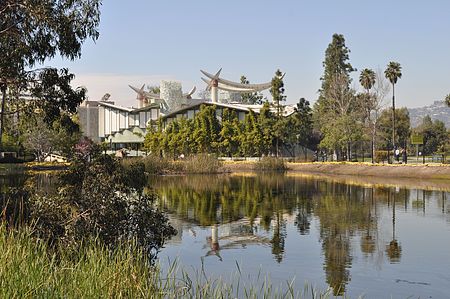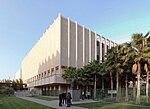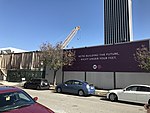Hancock Park
1924 establishments in CaliforniaCalifornia Historical LandmarksCommons category link is locally definedFossil parks in the United StatesMid-Wilshire, Los Angeles ... and 4 more
National Natural Landmarks in CaliforniaPaleontology in CaliforniaParks in Los AngelesProtected areas established in 1924

Hancock Park is a city park in the Miracle Mile section of the Mid-Wilshire neighborhood in Los Angeles, California. The park's destinations include the La Brea Tar Pits; the adjacent George C. Page Museum of La Brea Discoveries, which displays the fossils of Ice Age prehistoric mammals from the tar pits; and the Los Angeles County Museum of Art (LACMA) complex. They are among the most popular tourist attractions in Los Angeles.
Excerpt from the Wikipedia article Hancock Park (License: CC BY-SA 3.0, Authors, Images).Hancock Park
Wilshire Boulevard, Los Angeles Mid-Wilshire
Geographical coordinates (GPS) Address Website Nearby Places Show on map
Geographical coordinates (GPS)
| Latitude | Longitude |
|---|---|
| N 34.0636 ° | E -118.3568 ° |
Address
Los Angeles County Museum of Art (LACMA)
Wilshire Boulevard
90036 Los Angeles, Mid-Wilshire
California, United States
Open on Google Maps








